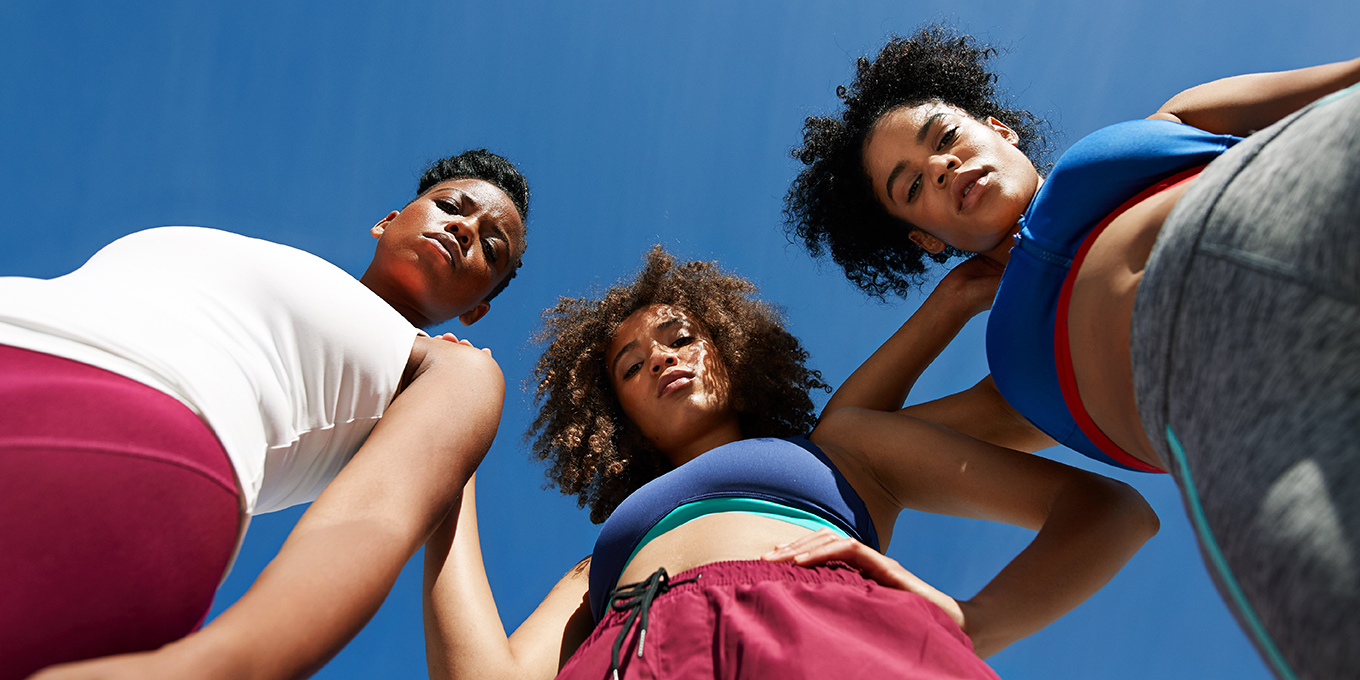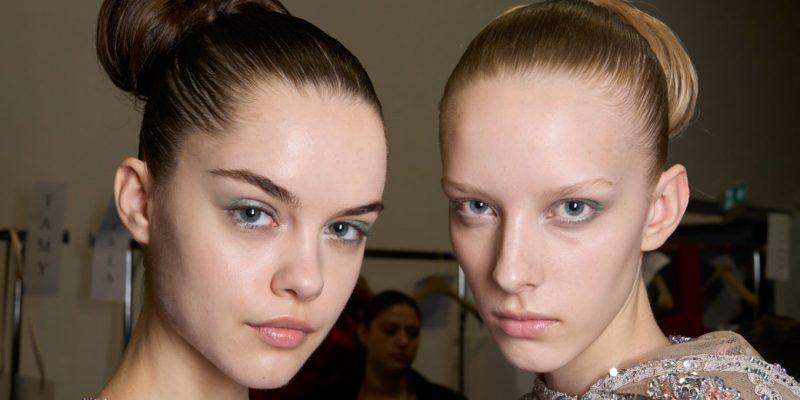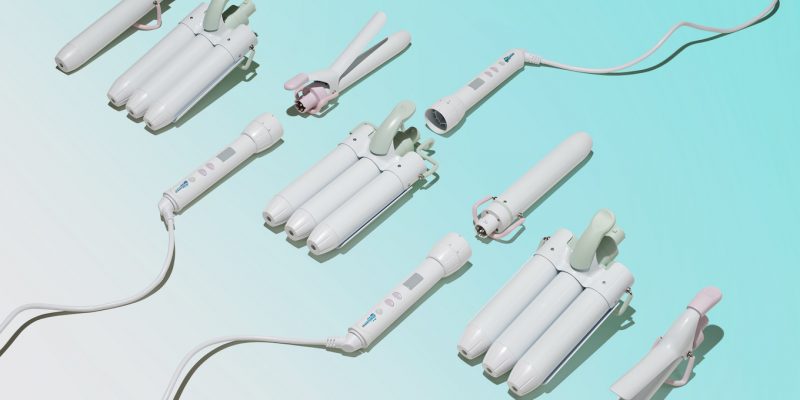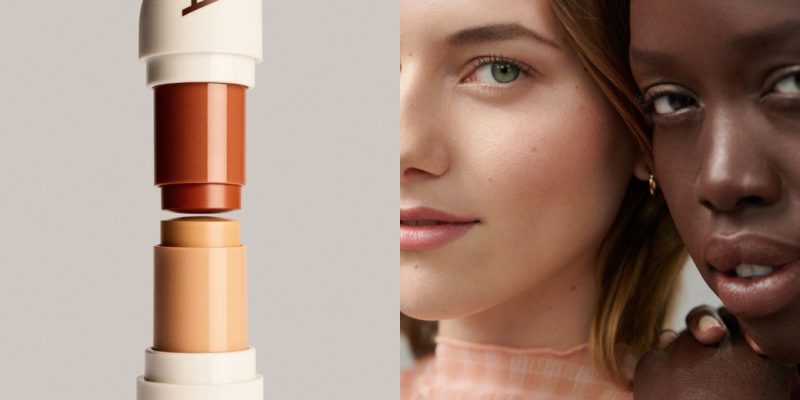Whether you’ve chosen natural curls, a perfectly coiffed weave or have invested in a relaxed texture or a fresh blowout, the experience of sacrificing a workout to preserve your Black hairstyle is universal. Because a blast of dry shampoo won’t always cut it, we tapped three industry insiders and women who sweat for a living for tips on how to keep Black hair healthy, strong and looking its best under steamy conditions.
The Celebrity Hairstylist
Moisturize. “The natural salts from sweat can make your hair and scalp extremely dry, eventually causing a lot of damage or breakage. Letting sweat sit in your hair for a while will definitely cause dryness,” says Janet Jackson, TV beauty expert and owner of JouJou Hair Salon. If you’re regularly gym-bound, it’s important to stay committed to weekly cleansing and conditioning. “I always suggest using a light oil on hair and scalp, too. The more you work out, the more frequently you will need to moisturize your hair,” she says.
Try a silk hair accessory. Taking action before you get physical can make a big difference, too. Choose a preventative measure based on your hair texture or style to protect it during a workout. A simple hair accessory provides universal aide for relaxed and natural textures, as well as anyone focused on preserving a blowout. “Wrapping your hair, securing it with a satin or silk head scarf or doo rag, will protect it from the moisture of sweat. Just make sure not to tie it too tightly,” says Jackson, “Or try a sweatband or silk wrap around the hair line, while hair is in a ponytail, to help keep it laid and absorb perspiration.”
If you have dreads, braids or twists, aim higher. “Do not leave your hair down during a workout. The moving, shaking and bouncing can cause breakage. Wrap your style into a bun on top of your head. If your style is shorter then a half-up, half-down style will do the trick,” she says. Once your sweat session comes to a close promptly undo and allow strands to hang loosely while air drying.
Brush hair prior to working out. If you belong to Team Extensions, it is important to brush out your hair before a workout, says Jackson. “Extensions can become matted or tangled once you start to move. Brush and then style hair neatly into a high ponytail or top knot. Braiding extensions into a huge plait works well, too,” she says.
Try conditioning gel in lieu of dry shampoo. For post-workout care of extensions or any other protective style, Jackson suggests using a conditioning gel. “It works like dry shampoo to refresh the hair and scalp, but won’t ruin your style,” she says.
The Curl Specialist
Keep hair away from sweat. “Up and away” is hairstylist Keina Morgan’s strategy for protecting black hair during a workout. “Women with type 3-4 curls can typically braid or twist hair up. And if you have long hair that’s relaxed or in a blowout, tie it back,” she says. The curl expert and owner of Urban Curls Boutique also suggests everyone wear a cotton headband. “It will absorb sweat and stop it from traveling throughout your hairline,” she says.
Focus on scalp care. For post-workout care, Morgan focuses on reducing the drying effect of sweat. “Keeping the scalp clean and fresh is an awesome launchpad for healthy hair,” she says. If you’re saturating hair in the shower, pivot from traditional shampoo to co-washing. This method uses conditioner to gently cleanse and refresh moisture levels in between weekly wash days, she says. As a quick touch-up for curls and protective styles, including weaves, crochet braids, locs and cornrows, Morgan’s go-to for a post-workout refresh is a handcrafted spray. The recipe is a 1:1 ratio of distilled water and witch hazel, and five drops each of lavender, tea tree and rosemary essential oils. “Plain water alone is drying since it has a higher pH level of 7.0, when the pH level of hair and skin is much lower at 4.5-5.5,” she says, “Witch hazel helps to relieve scalp conditions such as an itchiness or eczema. It can also help to stabilize an oily scalp without stripping moisture. The lavender addresses dryness, the tea tree is anti-fungal, and the rosemary helps reduce flakiness. But, if you suffer from an oily scalp, only include the tea tree oil.”
Use a hairdryer, not a flat iron. And if adding any moisture doesn’t work for your hairstyle, put a styling tool to work. “For anyone with a blowout or relaxed texture, it’s important to use a blow dryer to dry your roots. I like to use a Denman brush to smooth hair back, but I do not recommend using a flat iron afterwards as too much heat can cause damage,” she says.
The Olympic Athletes
Currently training for the Tokyo 2020 Olympic Games, track and field stars Khamica Bingham and Crystal Emmanuel are in step when it comes to hair care. Both women prefer a natural texture, simple styles and depend on a lineup of products to deliver results.
“I mostly style my hair completely natural, in a curly puff, or in a protective style, like braids or wigs,” says Bingham. “In terms of working out, I find a natural puff works best for me, because my hair is out of my face and stays pretty intact. It’s actually my most preferred hair style for training. Besides my big Sunday ‘Hair Day’, during the week I’ll usually brush the front, re-do my edges, spray water on the puff, add Aunt Jackie’s Leave-in Conditioner, sometimes add mousse, and off to practice I go,” she says. Relying on a dedicated roster of products translates into minimal upkeep once Bingham’s off-duty. “I find that there isn’t much to do, the Eco Style Gel and Style Factor Edge Booster do a pretty good job at holding my hair down. If I don’t have much time in the morning to really brush down the front and edges, then yes, I definitely rely on using a headband to keep everything down so it doesn’t go out of control when I’m sweating,” she says.
Emmanuel, a.k.a. Canada’s fastest woman and 200m national record holder, calls on a handful of hairstyles to keep up with her intense schedule. “I have Black natural hair and I love my Afro, but it can get dry and hard to comb in the wind and heat,” she says. Which is why you can usually find her sporting two braids, double Afro puffs or a high ponytail. “That works for me because it’s easy to get ready and I don’t have to stress about what style I want to do that day,” she says. When training comes to a close, Emmanuel finds putting in self-care time yields the best reward. “I work a lot with my hair by washing and braiding it to make it soft and easy to deal with the next day. I deal with sweat and frizz by washing with leave-in conditioner to keep it healthy. And my hair care routine for post-training also involves a hair mask to make sure it stays strong.” Her DIY blend includes olive oil, egg, mayonnaise and honey.
The Barre & Yoga Instructor
Consider braids. “Maintaining a hairstyle while working out has been a challenge that requires me to plan very meticulously,” says Jasmine Smikle, a product manager by day who spends her evenings teaching barre and yoga classes, “So far, braids have been the easiest thing for me. The protective style worked as I sweat and moved through my day.” Having recently switched things up, Smikle is discovering how to care for a whole new hairstyle. “When I had braids, I liked to keep my hair up and off my neck. Sometimes I’d do cute styles by braiding my braids, or tying them up in multiple sections, but most of the times it was a simple pony. Before [that], when I had a teeny weeny ‘fro and no braids, I’d finger coil it. Then as my natural hair grew I’d leave it in twists,” she says, “Now, I’m wearing my first weave ever. It’s a bit of a departure, a welcome change, and a challenge. At first I’d tie it up with my regular elastics, but I realized quickly that the elastic material damages the hair, so I’m a scrunchie gal now.”
Don’t fear a good sweat session. Given a schedule that gets her heart rate up regularly, Smikle’s commitment to hair care is equally consistent. “I find that, in general, the more I sweat, the happier and healthier my scalp is. As long as I keep it somewhere between squeaky clean and super well moisturized. So, I balance deeply nourishing oils, lotions, and potions with – dare I say – somewhat abrasive cleansing techniques,” she says. Her weekly routine starts with rinsing hair with a 1:1 water and apple cider vinegar solution (her preferred formula is the classic Bragg’s Organic). “After that, I’ll mix about a 1/2 cup of Aztec Healing Clay with a couple more tablespoons of apple cider vinegar and enough of another liquid, either water, olive oil or honey, to form a wet paste. I’ll slather the mixture through my hair, coating every strand, and put it up in a cap for as long as I possibly can.” Final steps include rinsing the mixture out, then using a moringa and hemp seed oil blend co-wash before applying a self-made mix of Jamaican castor and essential oils, such as sandalwood, cedarwood, orange or jasmine. “This routine is a doozie. Time is money, honey, so my hair is expensive – but worth it!”
READ MORE:
Newsletter
Join our mailing list for the latest and biggest in fashion trends, beauty, culture and celebrity.
Read Next

Beauty
The Best Met Gala Beauty Looks Of All Time
From Taylor Swift's 'Bleachella' era to Rihanna's iconic 2011 braids, meet the best beauty moments in Met Gala history.
by : Katie Withington- Apr 26th, 2024

Culture
Benny Blanco Says He Fell in Love With Selena Gomez Without ‘Even Noticing’ It
Allow Benny Blanco to tell the straight-from-a-rom-com story of how he realized his feelings for his girlfriend and longtime friend.
by : Alyssa Bailey- Apr 26th, 2024
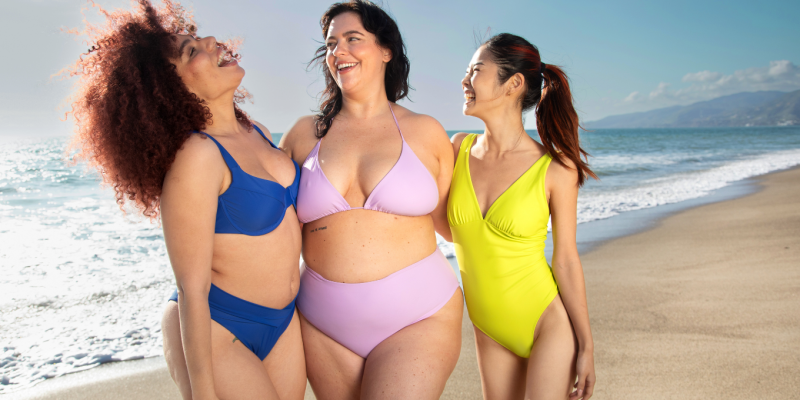
Beauty
Summer Prep: How to Feel Confident in Your Swimsuit
New Size-Inclusive Swimwear: Gillette Venus partners with The Saltwater Collective to Launch a Collection for Any Body
by : ELLE Canada- Apr 24th, 2024

